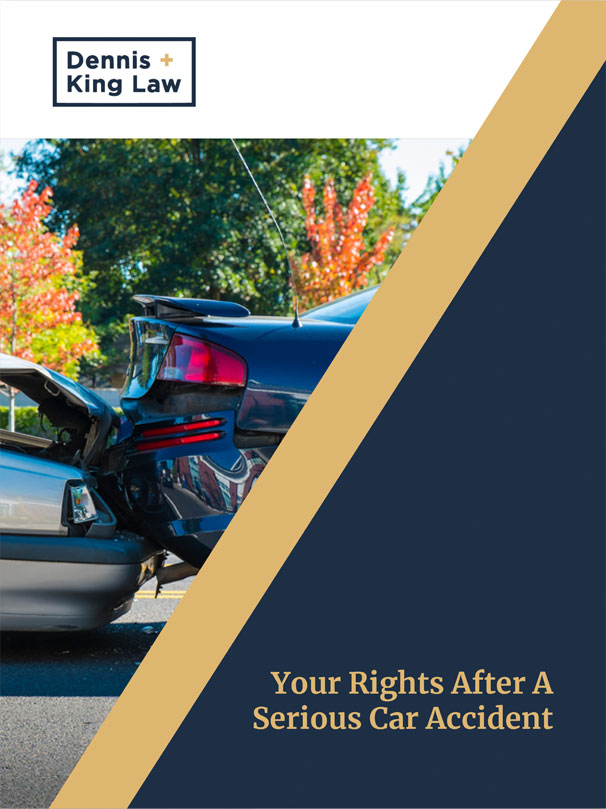Uninsured motorist coverage (UM) is a type of auto insurance that provides protection in the event of an accident with a driver who does not have insurance. It covers medical expenses, lost wages, and other damages that you may incur as a result of an accident with an uninsured driver.
Underinsured motorist coverage (UIM) is a type of auto insurance that provides protection in the event of an accident with a driver who does not have enough insurance to cover the cost of damages that you may incur as a result of an accident. It covers medical expenses, lost wages, and other damages that exceed the other driver’s insurance coverage limit.
Both Uninsured and Underinsured motorist coverage are designed to provide protection for you and your passengers in case of an accident with a driver who does not have enough insurance to cover the cost of damages.
IS UNINSURED MOTORIST INSURANCE OPTION IN TENNESSEE AND GEORGIA?
In Tennessee, Uninsured Motorist Coverage (UM) is optional, which means you can decide whether or not to purchase it as part of your auto insurance policy. In Georgia, UM is mandatory, which means you must purchase it as part of your auto insurance policy.
However, it’s worth noting that even though UM is mandatory in Georgia, you have the option to reject it in writing, but you must have liability insurance to do so.
WE URGE EVERYONE PURCHASE UNINSURED/UNDERINSURED MOTORIST INSURANCE!
According to a 2019 report by the Insurance Information Institute, Georgia has one of the highest rates of uninsured drivers in the United States, with an estimated 26% of drivers on the road without insurance. The state requires that drivers have liability insurance, but unfortunately it does not seem that everyone complies with this requirement. This number may vary from year to year and from a different source. It’s the same with Tennessee. According to the latest data from the Insurance Information Institute, as of 2021, approximately 12.5% of drivers in Tennessee are uninsured. This suggests that there is still a relatively high number of uninsured drivers in the state.
HOW MUCH CAR UNINSURED MOTORIST COVERAGE SHOULD I CARRY?
Generally, it is recommended to carry at least the same amount of uninsured motorist coverage as you have for liability coverage. This will ensure that you are protected in case of an accident with an uninsured driver. However, the minimum limit you can car in Tennessee and Georgia is $25,000 dollars.
$25,000 IN UNINSURED MOTORIST COVERAGE USUALLY WILL NOT GIVE YOU ENOUGH PROTECTION IF AN UNINSURED DRIVER INJURES YOU.
$25,000 in uninsured motorist coverage may provide some protection if an uninsured driver injures you, but it may not be enough to cover all of your expenses. The amount of coverage you carry should depend on your individual needs and risk tolerance.
If you are injured in an accident with an uninsured driver and your medical expenses exceed $25,000, you will have to pay the difference out of your own pocket. If you’re concerned about being underinsured, it may be wise to consider purchasing additional coverage. It is recommended to speak to your insurance agent or broker to determine the right amount of coverage for your specific situation.
DOES HIGH CAR UNINSURED POLICY LIMITS COST A WHOLE LOT MORE?
The cost of uninsured motorist coverage can vary depending on a number of factors, such as the limits of coverage you choose and the insurance company you purchase your policy from. Generally, higher limits of coverage will cost more than lower limits. However, the increase in cost may be relatively small compared to the added protection that higher limits can provide.
It is important to note that some states have mandatory Uninsured Motorist Coverage (UM) , with limits that you must purchase and sometimes at a low cost. In other states, UM is optional and you can decide if you want to purchase it or not and if yes, at what limits.
WHAT DOES STACKING INSURANCE POLICIES MEAN IN TENNESSEE AND GEORGIA
Stacking insurance policies refers to the practice of combining multiple insurance policies to increase the overall coverage limits. In the context of auto insurance, Georgia drivers, depending on the policy they purchased, can stack their insurance policies to increase the amount of coverage they have for damages or injuries resulting from a car accident. If you purchased the right to stack on your Georgia policy, policyholders can stack policies for different vehicles or for different types of coverage (such as liability, collision, and comprehensive) to increase the overall coverage limit.
Tennessee policyholders cannot stack policies in most circumstances. First, in Tennessee, uninsured motorist coverage (UM) is optional. Tennessee only requires drivers to carry liability insurance, which covers damages and injuries to other drivers, not the policy holder. Therefore, it is recommended to have additional coverage such as the Uninsured Motorist coverage to protect yourself in case of an accident with an uninsured driver.
WHAT IS ANTI-STACKING PROVISION OF TENNESSEE AUTO INSURANCE LAW?
Tennessee law limits the amount of coverage a policyholder can access when multiple policies are involved in a single accident. Tennessee state law limits the amount of coverage a policyholder can access from multiple policies in the event of an accident.
For example, if a policyholder has two separate auto insurance policies and is involved in an accident, an anti-stacking provision may limit the policyholder to accessing the coverage from only one of the policies, rather than allowing them to stack the coverage from both policies. This means that the policyholder would not be able to access the full coverage limits of both policies, and would only be able to access the coverage from one of the policies.
IF THE AT FAULT DRIVER HAS 25,000 DOLLARS LIABILITY COVERAGE CAN I STACK MY UNDERINSURED MOTORIST INSURANCE ON TOP OF THE 25,000?
In Tennessee, if the at-fault driver has liability coverage of $25,000 and you have underinsured motorist coverage (UIM), you cannot potentially stack your UIM coverage on top of the at-fault driver’s liability coverage of $25,000. However, all is not lost. If you have more underinsured coverage than the at-fault driver’s liability policy limits, you can recover the limit number of your policy. So if the underinsured driver has only $25,000 dollars and you have $100,000 you can potentially collect $100,000—$25,000 dollars from the underinsured driver’s policy and $75,000 dollars from your policy. What you can’t do in Tennessee is combine the underinsured’s policy of $25,000 dollars with your $100,000 dollars for a total of $125,000. That would be stacking which state law doesn’t allow.

 500+ five star reviews
500+ five star reviews








